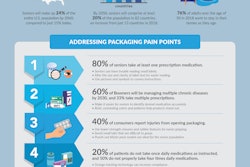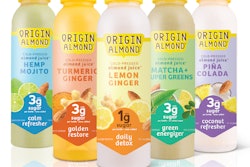Now, marijuana consumption, in all forms, remains illegal in fewer than a dozen states. It’s not necessary to speculate when or if those remaining states will change course, because the die is cast: state laws openly defy federal prohibition, seemingly with immunity, flashing the green light to companies and entrepreneurs seeking to cash in. Medical marijuana having paved the way, recreational marijuana is what provides the greatest impetus to the growth and expansion of cannabis-infused consumer packaged products.
Regarding packaging, it’s not all about having to reinvent the wheel. The material science, engineering, and art that make up packaging technology have the capability to meet whatever performance challenges that are imposed by cannabis-infusion.
That’s because recreational applications, for the most part, follow this strategy: begin with established retail product categories, e.g. beverages, baked goods, and candies; cannabis-infuse them; and package them using established packaging categories, e.g. bottles, cans, cartons, bags, pouches, etc. By that process, the conventional becomes cannabis-infused. Not every cannabis-infused product has to have a conventional counterpart, but the category won’t experience sustained success without packaging.
Packaging has to embody application-specific features imposed by cannabis-infusion. Features and functions, although related, are not synonymous: the packaging’s features are the means through which its functions (containment/protection, communication, and convenience/utility) are fulfilled. Unsurprisingly, regulations play a big role.
Containment/protection has to provide for child-resistance. C-R safety caps come in a variety of designs, but their application is limited to containers with threaded finishes, e.g. bottles and jars. Now available are C-R bags, having a clip or similar locking feature. There are C-R folding cartons. There are C-R pull-tab beverage cans. The preceding examples aren’t an exhaustive list of what’s presently available, but they do justify expectations that other innovations are sure to follow.
Communication must unambiguously convey that the product is cannabis-infused and to what extent (potency). Such clarity only implies that the product is not for children, necessitating explicit warnings, such as, KEEP OUT OF REACH OF CHILDREN. A related mandate is that the packaging not be attractive to children.
Convenience/utility has to include reclosability/resealability for those products that foreseeably might not be consumed in a single serving. Closely associated with serving size is portion control, which, for example, might lend itself to versions of unit-of-dose packaging and similar thermoform structures. On another note, whereas product visibility is a desired packaging feature for certain conventional products, opacity might be required for certain cannabis-infused products.
It’s important to recognize that the functions of packaging are not separated by rigid lines of demarcation. As a generalization, most if not all packaging features serve more than one packaging function.
Conventional and cannabis-infused products share some fundamental requirements. In both cases, packaging is essential to brand identity: the bestowing of personality and aura that differentiate. In both cases, the packaging—through structure, materials, and graphics—needs to project to consumers the optimal combination of quality and value. Incidentally, both of those characteristics should have a sustainability component.
Back when the trend of designating products as “natural” began, there was tedious similarity in the packaging, not only intra-category but inter-category: Packagers incorporated Earth-tones, bucolic depictions, and the like. Gradually, marketers and designers used packaging to convey “natural” in more diversified ways. Still in its infancy, the cannabis-infused products industries can learn from that evolution, and from the start, use packaging to identify the product’s category but also to boldly differentiate the product within its category, all while complying with a fractured (state-by-state) regulatory environment.
It’s a safe bet that some brand owners in conventional product categories regard cannabis-infusion warily for the threats it represents and longingly for the opportunities it represents. For the most part, those brand-owners are not publicizing their plans. However, suffice it to say that concerns that are sure to factor into those plans include impact on present brand(s) and on overall corporate image. Bowing to those concerns, some brand-owners will establish stand alone brands and others will go the acquisition route.
Don’t overlook the supply chain, especially retail. Dispensaries and specialty establishments can’t fuel the growth of cannabis-infused products as much as major retailers can. That said, major retailers are being cautious by being selective and, in some cases, hedging their bets with slotting fees.
Those same retailers carry alcohol and tobacco, products with psychoactive (mood-altering) ingredients. It’s not inconceivable, therefore, that those retailers will someday expand their offerings of cannabis-infused products, which, like alcohol and tobacco, are psychoactive, and, which like alcohol and tobacco, are legal (in designated states). Such a level of distribution will lend economies of scale, justifying greater automation and standardization of packaging operations. Presently, a mentionable portion of the packaging of cannabis-infused products is labor intensive.
The 2018 PW article describes the state-of-affairs as, “A 21st century gold rush.” Two years later, the description is still apt. Would-be prospectors should have good packaging among their tools.



























